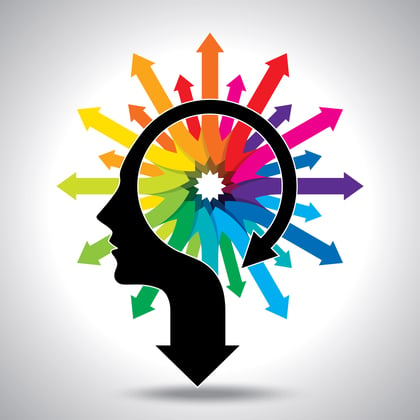Color Choice – more than meets the eye
 In our fast-paced world, it is important for suppliers and manufacturers to help alleviate the consumer’s pain of choosing – that’s where color knowledge comes in. Color not only conveys a brand or company image, but it can also emit emotions, support technological needs and give safety information, among other roles.
In our fast-paced world, it is important for suppliers and manufacturers to help alleviate the consumer’s pain of choosing – that’s where color knowledge comes in. Color not only conveys a brand or company image, but it can also emit emotions, support technological needs and give safety information, among other roles.
Color helps identify trusted brands. Many of the world’s leading brands have a custom color for their logo and company name. Often, a very basic image of that logo can be shared with someone and they will know exactly who the company is – as long as the image colors are correct. The colors themselves say something about the company, too. Red emits boldness and is the color of several of the best-known brands of our times. Blue says trustworthy and dependable, which is important in industries such as building supplies and home improvement. Green is also a very common logo color, showing growth and planet friendliness.
Color can also make us feel things. Whispery pastels often speak of youth and softness, white of purity and black of mourning. Of course, what a color says in one society or culture can be different in another, so it is best to know the audience and region of the product you are marketing. This is especially true in fashion and personal care as these cheaper, more consumable goods are heavily influenced by cultural norms. Larger, more costly items such as cars and houses generally do not vary as much as they are larger money investments which require fewer purchases over a lifetime and need to “stand the test of time” with more subdued, standard colors.
Identifying with others or setting oneself apart is another way color is used. While we may choose to wear the colors of our favorite sports team to fit in with the crowd, we may also choose to appear in a color that sets us apart, letting others know we are okay with being different.
There is another, scientific side to the colors chosen in specific circumstances. For example, why do so many suburban housing additions use some hue of white, beige or almond vinyl siding? It’s because the high level of TiO2 in that color space protects the vinyl siding from UV and heat damage by reflecting sunlight. These light colors standup to the harsh elements longer than darker, more saturated colors thereby being more economical in the long run than alternative colors. And speaking of protection, consumables such as beer are often packaged in amber or green bottles because these colors afford better protection than clear glass while the product is on the shelf waiting to be purchased.
Color is also used to appeal to our visual sense. Dogs can’t see most colors, yet many dog foods have added color. Fido is mostly interested in how his dinner smells, but various colors signal various nutrients and more interest to the human eye. So, until canines can do their own shopping, many pet food companies will continue to appeal to human senses.
Safety can also be furthered or conveyed with color. Since 1939, US school buses have been a dedicated yellow color, proven to be identified quicker than red in human peripheral vision. And with the extreme contrast of black lettering, the identification of the school corporation and bus number can be quickly and easily seen in even foggy conditions.
In conclusion, color is not just for visual appeal – it very often serves a purpose beyond what we see. And, as time goes and societal and scientific needs change, we will continue to adjust to what is most helpful and sought after. Contact us to get in touch with one of our experts from our color design lab.



